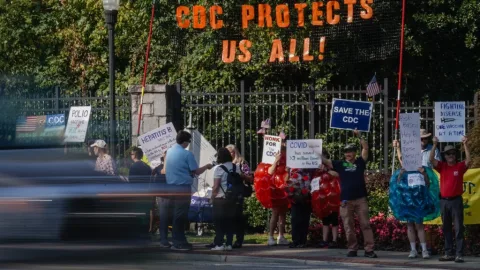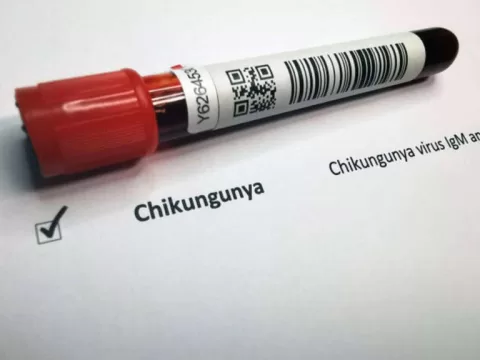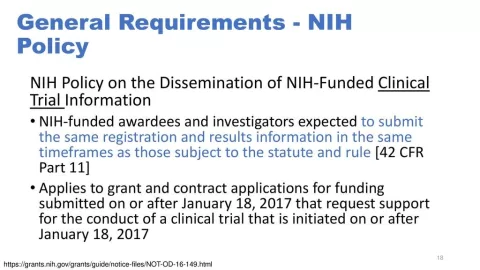Fusarium solani meningitis is a rare but potentially life-threatening fungal infection that emerged as a significant public health concern in 2023. This outbreak primarily affected patients undergoing surgical procedures under spinal anesthesia in Matamoros, Mexico. Using advanced metagenomic sequencing techniques, researchers have traced the origins of the infection to a point source, likely contaminated medical supplies or drugs. The investigation into this meningitis outbreak highlights the critical role of innovative methods like metaMELT in understanding transmission patterns and identifying the responsible fungal strains. Public health investigations such as this are essential in preventing future occurrences of similar fungal infection outbreaks.
Infectious meningitis caused by Fusarium solani represents a critical health issue that arose during a concerning outbreak linked to surgical practices. The utilization of metagenomic technologies allows for a thorough exploration of these infections, highlighting the need for rapid identification methods in clinical settings. The current scenario underscores the importance of effective surveillance and response tactics to fungal pathogens derived from contaminated medical environments. This situation also amplifies awareness regarding the implications of fungus-associated diseases in public health. Understanding such outbreaks invites a holistic view of infection control and prevention strategies.
Understanding Fusarium solani Meningitis and Its Outbreaks
Fusarium solani meningitis represents a serious fungal infection that has garnered attention following notable outbreaks, particularly in healthcare settings. This pathogen, a member of the Fusarium species complex, typically resides in the environment but can cause significant disease when introduced into the human body, especially during invasive medical procedures. In 2023, an outbreak of Fusarium solani meningitis among patients undergoing spinal anesthesia in Matamoros, Mexico, highlighted critical gaps in infection control during such surgeries, thereby underscoring the need for stringent precautions and infection surveillance in clinical settings.
The rapid identification of Fusarium solani as the causative agent through advanced techniques like metagenomic next-generation sequencing (mNGS) has revolutionized the approach to outbreak investigations. mNGS offers the ability to quickly assess complex microbial landscapes in clinical specimens, which is crucial for timely public health interventions. Understanding how this organism causes disease is paramount not only for immediate patient care but also for broader epidemiological efforts aimed at preventing future outbreaks.
The Role of Metagenomic Sequencing in Outbreak Investigations
Metagenomic sequencing has emerged as a pivotal tool in public health investigations, especially in the context of infectious disease outbreaks. This technology allows researchers to sequence and analyze DNA directly from clinical samples without the need for prior culture, making it especially relevant for detecting fastidious pathogens such as Fusarium solani. In the case of the meningitis outbreak linked to surgical procedures, mNGS enabled the identification of not just the causative agent but also its genetic relationships, providing unprecedented insights into the outbreak’s dynamics.
By employing mNGS techniques, public health officials can construct detailed phylogenetic trees to trace the transmission routes of pathogens. In the 2023 Fusarium solani meningitis case, researchers utilized these methods to confirm a common point source of infection, believed to be contaminated medical equipment or drugs. This powerful capability of mNGS not only aids in diagnosing infections but also equips health authorities with the necessary data to inform containment strategies and prevent similar future outbreaks.
Impact of Fungal Infection Outbreaks on Public Health
Fungal infection outbreaks, such as the Fusarium solani meningitis cases, pose significant threats to public health due to their potential for widespread morbidity and mortality. These outbreaks often highlight weaknesses in healthcare systems, particularly concerning sterilization processes and the use of medical devices. The Matamoros meningitis outbreak exemplifies how lapses in safety can lead to devastating infections, prompting calls for rigorous oversight and improved practices within surgical environments.
The public health implications are profound; when healthcare-associated infections arise, they challenge existing protocols and direct resources toward outbreak response rather than routine care. Consequently, addressing the risks associated with fungal infections requires a multi-faceted approach encompassing improved clinical guidelines, enhanced surveillance systems, and educational campaigns about potential risks linked to certain medical procedures.
Epidemiological Insights from Fusarium solani Case Studies
Epidemiological investigations of Fusarium solani meningitis cases have underscored the importance of tracing exposure pathways and understanding community health impacts. During the recent outbreak involving patients who had spinal anesthesia in Mexico, researchers highlighted the need for comprehensive data collection to identify points of contamination effectively. This case served as a reminder of how interconnected our healthcare practices are across borders and the necessity for collaborative efforts in tracking and mitigating such public health threats.
Further, these studies have provided critical insights into the microbiological aspects of fungal infections. By leveraging advanced genomic tools, epidemiologists can identify strain variations and understand the transmission dynamics that contribute to outbreaks. This information not only assists in managing current cases but is also essential in advancing preventive measures and formulating public health policies that minimize future risks associated with invasive medical procedures.
Challenges in Diagnosing Fusarium solani and Other Fungal Pathogens
Diagnosing Fusarium solani infections presents unique challenges due to its biological characteristics and the subtlety of clinical symptoms. Fungal pathogens often share clinical manifestations with bacterial infections, leading to misdiagnosis or delayed treatment. In cases such as the fungal meningitis outbreak, the rapid identification of the specific pathogen using mNGS has proven essential in steering the course of clinical care and outbreak management.
Additionally, the reliance on traditional culture methods can lead to significant delays in diagnosis for fungal pathogens like Fusarium solani, which may take longer to grow and require specific conditions for cultivation. The challenges in diagnosing such infections not only affect individual patient outcomes but also hinder timely public health response. Expediting the diagnostic process through metagenomic approaches could thus revolutionize not only patient care but also the broader epidemiological landscape.
Implementing Preventative Measures Against Fungal Infections
To prevent future outbreaks of Fusarium solani and other fungal infections, it is critical to implement robust infection control measures within healthcare settings. This includes stringent sterilization protocols for medical devices and increased surveillance for any deviations from standard practice that could lead to contamination. By fostering a culture of safety and vigilance within surgical teams, healthcare facilities can reduce the risks associated with invasive procedures.
Education and training sessions tailored for healthcare professionals can further reinforce these preventative strategies. Understanding the pathways for infection and the importance of adhering to safety protocols can significantly enhance patient safety. Policymakers and healthcare administrators must prioritize these efforts to safeguard against potential fungal infection outbreaks, ensuring both patients’ health and the integrity of healthcare systems.
The Future of Fungal Pathogen Surveillance
The future of fungal pathogen surveillance, particularly in light of outbreaks like Fusarium solani meningitis, lies in the integration of advanced genomic technologies with traditional public health practices. Ensuring that health systems are equipped with the tools necessary for rapid identification and response to emerging fungal threats will be vital. Expanded access to metagenomic sequencing capabilities can help in early detection and rapidly draw connections between cases, thereby preventing large-scale outbreaks.
Moreover, enhancing cooperation between local health authorities, federal agencies, and international organizations can lead to more comprehensive surveillance networks. Sharing data and findings on fungal infections will not only improve immediate response efforts but also contribute to a global repository of knowledge that can be beneficial in future outbreaks. Investing in such collaborative frameworks is a critical step in safeguarding public health against the rising tide of fungal infections.
Public Awareness and Education on Fungal Infections
Raising public awareness about fungal infections, especially in the context of surgical procedures, is crucial for prevention and mitigation efforts. Many individuals remain unaware of the potential risks associated with surgeries conducted in certain environments or the importance of following postoperative care instructions to reduce infection risks. Educational campaigns that inform patients about the signs and symptoms of fungal infections can empower them to seek timely medical advice and potentially save lives.
Engaging with the community through informative seminars, workshops, and digital platforms can help demystify the complexities of fungal pathogens, such as Fusarium solani. Citizens equipped with knowledge on hygiene practices, the significance of stringent medical protocols, and the potential dangers of contaminated medical supplies will be more likely to advocate for their health and the quality of care they receive.
The Role of International Collaboration in Public Health
International collaboration is essential when addressing global health concerns such as fungal infection outbreaks. Given the widespread travel and trade that can contribute to the transference of pathogens, a coordinated response involving multiple countries and health organizations is crucial for effective outbreak management. The Fusarium solani meningitis outbreak highlights the urgency of international partnerships to monitor, manage, and respond to health threats that cross borders.
By leveraging resources, sharing information, and pooling expertise, countries can enhance their capacity to respond to fungal infection outbreaks. Collaborative research projects can further identify emerging fungal threats and enhance our understanding of their epidemiology. Establishing global frameworks for surveillance and response will be instrumental in mitigating public health risks associated with fungal infections and ensuring better preparedness for future outbreaks.
Frequently Asked Questions
What is Fusarium solani meningitis and how does it relate to recent meningitis outbreaks?
Fusarium solani meningitis is a rare but serious fungal infection that affects the membranes surrounding the brain and spinal cord. The recent outbreak of Fusarium solani meningitis among patients who underwent surgical procedures in Matamoros, Mexico, highlights the increasing public health concern associated with fungal infections, particularly those linked to contaminated medical supplies.
How does metagenomic sequencing help in the investigation of Fusarium solani meningitis outbreaks?
Metagenomic sequencing, particularly the method known as metagenomic next-generation sequencing (mNGS), is pivotal in investigating Fusarium solani meningitis outbreaks. It allows for rapid identification of pathogens directly from clinical samples, facilitating early public health investigations and enabling the tracking of infection transmission pathways.
What public health measures are being taken in response to the Fusarium solani meningitis outbreak?
In response to the Fusarium solani meningitis outbreak, public health authorities are conducting thorough investigations to identify the source of contamination, such as contaminated drugs or medical devices used in anesthesia. Enhanced monitoring and safety protocols are also being implemented in surgical settings to prevent future fungal infection outbreaks.
How does Fusarium solani cause meningitis after surgical procedures?
Fusarium solani can cause meningitis following surgical procedures, particularly when contaminated substances, such as anesthetics, are injected into the cerebrospinal fluid. This underscores the importance of stringent infection control practices in medical environments to prevent outbreaks of fungal infections.
What role does phylogenetic analysis play in understanding the Fusarium solani meningitis outbreak?
Phylogenetic analysis plays a crucial role in understanding the Fusarium solani meningitis outbreak by identifying genetic relationships between fungal strains isolated from affected patients. This analysis helps clarify transmission pathways and supports the identification of a common source of infection, which is essential for effective public health responses.
Why is rapid identification of Fusarium solani important during fungal infection outbreaks?
Rapid identification of Fusarium solani during fungal infection outbreaks is essential to initiate timely interventions that can minimize health risks and prevent additional cases. Techniques like metagenomic sequencing enable healthcare professionals to swiftly identify the pathogen and implement necessary public health measures.
What are the implications of the Fusarium solani meningitis outbreak for future public health investigations?
The implications of the Fusarium solani meningitis outbreak for future public health investigations include the need for improved diagnostic technologies, enhanced surveillance for fungal infections, and the establishment of strict safety protocols during surgical procedures to protect patient health.
| Section | Key Points |
|---|---|
| Abstract | An outbreak of Fusarium solani meningitis was investigated using mNGS, identifying a link to surgical procedures in Matamoros, Mexico in 2023. |
| Introduction | Whole-genome sequencing (WGS) is essential for outbreaks but is limited by culture challenges for fastidious pathogens. |
| Methods | CSF samples from 5 patients were analyzed using mNGS techniques for pathogen identification. |
| Results | Phylogenetic analysis showed clustering of strains indicating a common source outbreak linked to contaminated anesthesia. |
| Discussion | mNGS effectively identifies pathogens and elucidates transmission patterns, highlighting the outbreak’s contamination source. |
Summary
Fusarium solani meningitis has emerged as a significant health concern following an outbreak linked to spinal anesthesia procedures in Matamoros, Mexico. The use of metagenomic next-generation sequencing (mNGS) provided critical insights into the source and transmission of the infection, benefitting public health investigations. This case underscores the importance of rapid diagnostics and advanced sequencing techniques in managing infectious disease outbreaks effectively.
The content provided on this blog (e.g., symptom descriptions, health tips, or general advice) is for informational purposes only and is not a substitute for professional medical advice, diagnosis, or treatment. Always seek the guidance of your physician or other qualified healthcare provider with any questions you may have regarding a medical condition. Never disregard professional medical advice or delay seeking it because of something you have read on this website. If you believe you may have a medical emergency, call your doctor or emergency services immediately. Reliance on any information provided by this blog is solely at your own risk.








